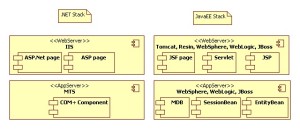I am usually questioned by friends regarding Java IO. Questions usually revolve between byte and char conversion and what determines the codepage used. My answer to them is always the same: if you are using Streams you are dealing with bytes and if you are dealing with Readers and Writers then you are dealing with Chars (usually you specified codepage to be used or it is using system default). I usually tell them to distrust any class named SomethingStream that have any method that operates over Strings (eg.: ServletOutputStream) cause they’ll usually do some implicit conversion (either using system codepage or something else out of your control).
I’ve prepared a diagram to clarify the main Java IO classes (and their main methods also):
On the bottom you’ll find Stream classes, they operate on bytes so codepage here is irrelevant. In the middle you’ll find conversion classes: those are the ones that allow you to forcefully define a codepage, they are the bridge classes that allow you to plug a Writer on an OutputStream or a Reader on an InputStream. You may use them to specify, for example, a codepage for writing on a TCP socket. And lastly, on top, you’ll find Character (and therefore String) oriented classes: Reader and Writer.
You may have noticed that I have included the Buffered version of the Stream classes. The Output one provides better performance under certain scenarios. The BufferedInputStream on the other hand allows you to mark and rewind its content, something usually useful for implementing protocol interpreters.

 .. I bought a
.. I bought a 


